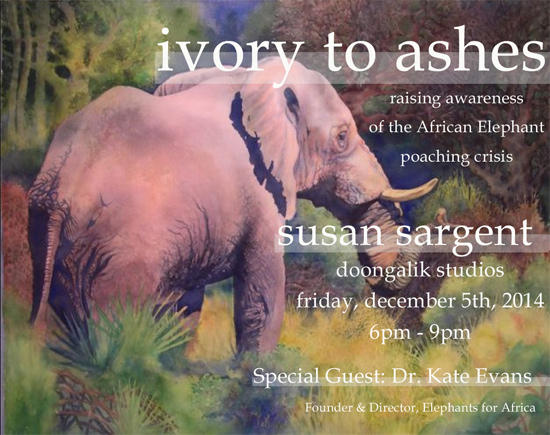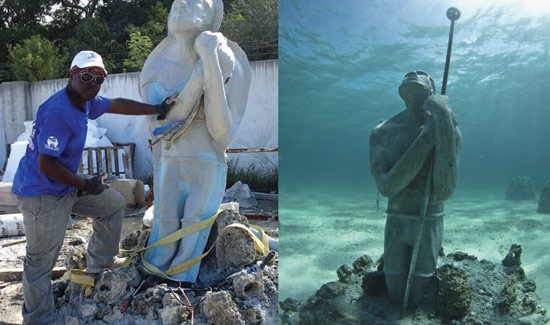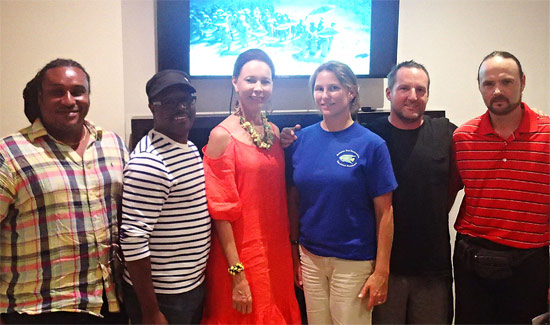NORTHERN BAHAMAS DISASTER CONFERENCE – The United States Embassy in conjunction with the Pacific Disaster Center proposed a workshop with limited funds, USNORTHCOM partners with The National Emergency Management Agency (NEMA) to participate jointly in knowledge exchanges, conferences, seminars, and construction projects.
Partnerships such as those between NEMA and USNORTHCOM allow for nations to draft plans and understand each other’s capabilities if the need were to arise for a call for assistance.
The aims of the disaster conference are to reinforce the concepts of disaster mitigation, and preparedness, and to strengthen the relief, repair, restoration and recovery mechanisms in the islands, and ultimately the synchronization of the method of operating in all districts and communities of the northern Bahamas in the event of a disaster or emergency incident. The conference was officially opened by Administrator Don Cornish JP. Office of the Prime Minister,
The Administrator said that he was pleased to have been invited to give opening remarks at this important conference. This conference is being hosted on Grand Bahama and in the Bahamas at a critical time in our nation’s history as it relates to disaster management. While we have had our share of disasters of late, it has been ours to count the many blessings we enjoyed, particularly during the hurricane season when we were consistently spared the ravages of a major storm. Three ladies by the names of Frances, Jane and Wilma changed that mindset in 2004 & 2005.
The recent tornado of March 2010 reinforced the importance of consciousness as well as the requirement of preparedness more firmly – just in case we had fallen asleep or lost focus. We have moved gradually away from the notion that our greatness and only threat to our population and environment is that brought by seasonal hurricanes. We are now fully cognizant of the many threats we face, particularly here in Grand Bahama where we have a very large industrial plant, a major container and cruise port and an international airport.
Disaster Management in the 21st Century now employs new concepts of weather tracking via Doppler radar, satellite and barometers. It makes use of the superiority of well analyzed data and expert forecasting and prognosticating. We have come a long way ladies and gentlemen, from the village where the only news we got was from some wise person reading nature’s signals instinctively in a tiny Bahamian village and later on to our radio sets, rare as they were in the early 20th century. It is in this new environment that we operate, where training and education and new strategies have been joined with new innovation and careful planning. This environment demands that we remain on the cutting edge of technological advances and keep abreast of forecasting methodology in order to protect the population and properly.
While much of what we prepare for is the seasonal hurricane, we are ever mindful that there are many other potential disasters cannot be seen in a vacuum and must never be understood as singular threats in an isolated period. Believe it or not disasters are not 9am – 5pm Monday through Friday. They may occur at 3 am on a Sunday or 5am on a Saturday or 9pm on a Wednesday night. We must be vigilant and in a constant state of readiness, we must assess and reassess our assessments. We must have resources and human capital on the ready and armed with data and capability to acts on a moments notice.
This is the new reality that we face and one to which we must continue our 100% commitment, there is no Government in the world that can undertake disaster preparation and management alone. Disaster preparation and management involves several layers of stakeholders and partnerships with these stakeholders.
Ladies and gentlemen this is a “great time” to be in Grand Bahama Island. We are in the meaty portion of the hurricane season. September is an important month on our disaster calendar, as we have had several severe storms during this month in the Bahamas. Grand Bahama is no stranger to hurricane and severe weather, having suffered hurricane and tornado’s at a very high frequency. You should know that Grand Bahama is within its forecast window of hurricanes. In June 2005 Deputy Director of Meteorology Trevor Basden revealed that for the entire Caribbean Basin, which stretches from the Leeward and Windward Islands in the east to Hispaniola and Cuba in the West,
The Bahamas Island have the greatest frequency of cyclones. The Caribbean Hurricane Network has indicated that the Hurricane Capital of the Caribbean is Abaco, with 18 severe hurricane since 1851, which is an average one hurricane per eight to nine years. Since 1994, Key West and Nevis have seen the most severe hurricane seven or about one every eight to nine years, Grand Bahama saw th e most hurricanes, 40 – one every four years.
These staggering statistics, which coupled with the many other threats, ranging from plane crashes to fires to hazardous material to tornado’s, make the Bahamas a vulnerable country. It is my hope that we can come together more often to exchange ideas and share information. It is in this way that we can continue to move ahead of curve and ensure maximum protection for our communities and this country we all love. It is indeed my pleasure to declare this Conference officially open.



